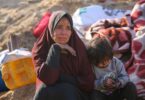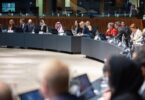Sid Noonari
As the time is passing by some organizations within Pakistan are becoming pervasive and dominant. Powerful organizations are more concern to maintain their powers while the competing ones are not giving up. The tug of war among political parties is also dragging various institutions to jump into the mud. Directly or indirectly, the key position holders of these institutions get involved and relate their agendas according to their political settings. Sympathetic to one or another political party, organizational heads have shown less concern about the ‘thinking in systems’ -understanding more than the sum of its parts.
Organizations are based on main four frames: structural frame, human resource frame, political frame, and symbolic frame. These main areas serve multiple functions to promote the managerial wisdom and social science knowledge. For instance, structural frame, (structural approach) focuses on the architecture of the organization- the design of units and subunits, rules and roles, goals, and policies. The human resource frame emphasizes understanding people – their strengths and weakness, reason and emotions, desires and fears. The political frame sees organizations as competitive arenas of scarce resources, competing interests, and struggling for power and benefits. The symbolic frame focuses on issues of meaning and faith. Leaders and managers, through this frame stage organizational drama for internal and external audiences, and build spirit through rituals, ceremonies, storties.
Unfortunately, both political and governmental organizations in Pakistan (except armed forces) are designed in a way that they try to accelerate in political and symbolic frames but overlook the structural frame and human resource frame. Sometimes, when few organizations become powerful they hardly bear others to be their competitors. As the result inter-connectivity and harmony among organizations within a system damage widely and rivalry behaviors take place. In most cases, even when the organizational heads do not want to hurt the interest of the country, the lack of ‘systems thinking’ and the inability of ‘reframing organizations’ to see the same thing from multiple lenses helplessly confuse them and harm the vast interest of the country.
For instances, we can see the symbolic frame of military organizations in Pakistan. The armed forces are proud of their battle stories, heroes, two-nation theory, pan-Islamization and ceremonial events. Such frames suffice them to collect moral support of the nation. Within the political frame, their power and conflict management make them second to none. Compared to civilian organizations, the structural frame and human resource frame within the military units are too organized (or enforced) to make their employees cry for a change. As the result, many political and religious turmoils were easily handled by military establishments within the organization and outside it.
Talking about the political parties and non-military organization, all are stressed to enable themselves within the political frames and symbolic frames only. PML (N), PPP, Tahreek-e-Insaff, MQM, religious parties, nationalist parties and rest of parties are more active in their political frames to get the power and benefits over others. They have less time (or do not want) to focus on their organizational structure and need of their people (human resource frame). Nonetheless, they successfully and dramatically maintained their symbolic frames in the name of Bhuttoism, patriotism, struggles, sacrifices, religious slogans, and conspiracy theories. The symbolic frames within parties are getting so firm to give them a lifeline for decades in the future. The sacrifice of ZA Bhutto is still working in Sindh to bring PPP into the government. Pre-partition sacrifices and Muhajir card are enough to uphold fictions of MQM.
Unwanted questions are easy assumed as threats to islam and country to lebal hundereds of people as “traitors”. Many nationalist parties in Sindh and KPK who were structurally well sustained in the decade of 80s and early 90s can hardly survive in these days under the symbolic frame (heart-touching past stories).
On the other hand, few non-governmental welfare trusts like Agha Khan foundation, Edhi, Saylani, Chhippa, and others are totally depending on HR frame to help needy people. Agha Khan foundation is doing well in three frames; structural frame, human resources frame, and symbolic frame but have no interest to build its political frame.
We have seen many endeavors by Abdul Sattar Edhi in the past when he tried to strengthen the political and structural frames of his organization. But soon we got shocked with many fabricated stories that damaged his symbolic frame. Political and civilian organizations hardly can maintain the four frames to build a strong organization like Pakistan Army. When few parties and organization tried to focus on more than two frames the third and fourth frames were badly damaged by interior factors of the party or by exterior elements of rival organizations.
The most powerful organization in the government (military establishment) is the only organization that running the four frames at the same time. That is the reason they successfully manage to handle the emerging parallel organizations. The example of judiciary movement and electronic media are in front of us. The recent removal of Nawaz Sharif is actual the disapproval of his appearance as parallel structural and political approach against those who are leading.
Ruling organizations deal with their rivals differently according to the best frame performance. Those governments who are better in human resourcing frame always use HR frame by offering a better financial package to ease and please the people. Handling the situation within the HR frame has been noticed when government organizations offer bonus salaries, holiday packages, paid leaves and salary raise. In the larger level, governments bribe with plots, tenders, and luxury cars.
Politically strong organizations act with force to destroy the opponents.
Sometimes even non-violent organizations are crushed brutally because of the fear of coup or revolution to change the system. Politically and linguistically, the term is used “no state within a state” to justify the encounter measures.
To damage the structural frames of opponents, rumors are spread and symbolic frames are used. Through the symbolic frame, countries like Pakistan use very sensitive issues like, threats to country, religion, blasphamy. If these do not work, personal matters are highlighted.
The suitable example is Turkey. Because of the powerful structural frame, the government successfully controlled and then spoiled the possibility of parallel organization of Hizmet movement in July 2016. Hizmet movement lead by Fethullah Gulan was well capable to organize and run his organization with an appropriate balance of four frames. The multi-framing approach was not less than a threat to replace a whole government system with a new one. However, police, media, and judiciary system was well structured and capable to react in the fail the coup.
In Pakistan, two major political parties- Pakistan Awami Tahrik of Dr. Tahir-ul-Qadri and Jamait Islami kicked up framing their organizations with strong multi framing approaches. JI could not maintain its authority and political hold but still grips strong structural frame and human resource frames. PAT has world wide networks that are well accomplished in all four frames. However, the organization has cleverly disguised the frames by dividing the organization into two major parts- Pakistan Awami Tahreek and Minhaj-ul- Quran networks. Moreover, the organization is not challenging the military’s political frame. Once, the challenging or parallel approach sensed the result would be not different than MQM and Gullan movement.
Briefly, if we dig into the various organizations in Pakistan we can see the lack of basic four frames that build a strong organization. Compare to civilian organizations only military organizations are capable of covering the four frames; structural frame, human resource frame, political frame, and symbolic frame. Nevertheless, they have not initiated to reframe the organization according to the modern requirements. Moreover, because of lack of systems thinking every institution is racing to enhance its political frames followed by symbolic frames. While structural frames and human resource frames are equally disregarded. Such negligence determines a behavior which further damages the political and symbolic frames of organizations and of the country.
The reframing of organizations in civilian sectors and the promotion of ‘systems thinking’ in military leadership for the larger interest of the country is the fundamental solution of the current abysmal disorder. Otherwise, temporary solutions will keep hiding the mess under the rug.






